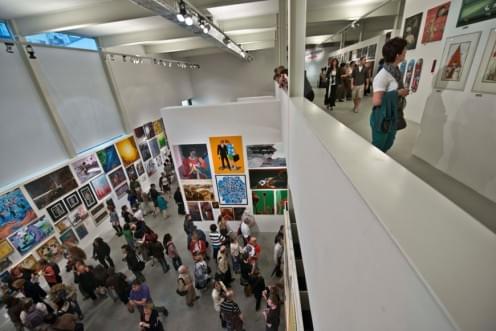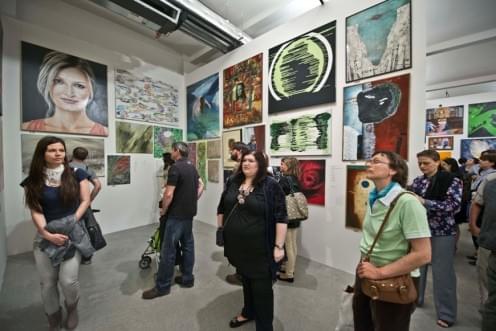Art Salon - Painting
4 – 25 May 2012

The open call attracted 535 entrants with 1132 works, which were exhibited at 1 000m2 of exhibition space.
The voting for the best exhibited work progressed at: http://www.facebook.com/DOXPrague.cz
The prize for the highest count of votes given by the DOX visitors goes to Patrik Hábl, who collected 252 votes in the exhibiton and 609 votes on FB. He became the only participant of Art salon who placed amongst the first twenty both on FB and in the exhibition (where he gained the first place).
The final amount of votes was 2670 in the exhibition and 16 318 on Facebook. The summary sheet can be downloaded as the pdf file in three versions - sequenced by the authors' surnames, the number of votes in the exhibition and the number of votes on Facebook.
Thank you for your votes!
a commission or any other classification or hierarchy. Art Salon is
a democratic arena, an arena for public participation and criticism.



















